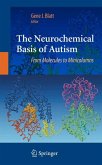A powerful collection of readily reproducible cutting-edge techniques for characterizing the ligand or substrate binding of neurotransmitter receptors and transporters. The procedures cover interdisciplinary interactions for monoamine transporters, amino acid transporters, ionotropic receptors, metabotropic glutamate receptors, GABA receptors, and other G protein-coupled receptors. By illuminating how neurons in the central nervous communicate with other, these techniques can lead to the development of novel therapeutic strategies for neurological diseases. The ability to clone large numbers of receptors and transporters for neurotransmitters, and then to produce specific mutations of these proteins, has yielded significant understanding of their pharmacological and functional properties, with still deeper insight obtainable through the application of computational and medicinal chemistry. In Molecular Neuropharmacology: Strategies and Methods, leading neuroscience investigators combine advanced chemistry with molecular modeling to produce a powerful collection of cutting-edge techniques for characterizing the ligand or substrate binding of neurotransmitter receptors and transporters. The procedures cover interdisciplinary interactions for monoamine transporters, amino acid transporters, ionotropic receptors, metabotropic glutamate receptors, GABA receptors, and other G protein-coupled receptors. Information about x-ray crystallographic analyses is included whenever available.
State-of-the-art and highly practical, Molecular Neuropharmacology: Strategies and Methods provides detailed accounts of the tools needed to understand how CNS neurons communicate and promises the development of novel therapeutic agents and strategies for many neurological diseases.
State-of-the-art and highly practical, Molecular Neuropharmacology: Strategies and Methods provides detailed accounts of the tools needed to understand how CNS neurons communicate and promises the development of novel therapeutic agents and strategies for many neurological diseases.
"I would highly recommend this book to neuroscientists, pharmacologists, and medicinal chemists who are interested in ligand-macromolecular interactions. It provides descriptions of state-of-the-art tools needed to understand how CNS neurons communicate and perspectives regarding the development of novel therapeutic drugs for neurological diseases. Each chapter is well written and concise beginning with an appropriate introduction to the topic and ending with a brief summary, conclusion, or future perspective section. The references are selective and appropriate. Special features include cutting-edge techniques for using site directed mutagenesis and molecular modeling; novel insights into the functioning of transmitter receptors and transporters; and state-of-the-art discussions on the molecular pharmacology of GABA and glutamate receptors and transmitter transporters. "-Doody's Health Sciences Book Review Journal "...provides a highly readable account...an excellent book." - ChemBioChem








